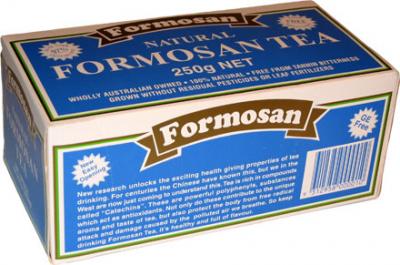
Formosa tea refers to tea produced in Taiwan. Formosa was the original name of the island, but while the island is called Taiwan, tea from the island is still called Formosa tea.
Taiwan currently produces black, green and oolong teas, but it is the oolong tea that Taiwan is most famous for. Formosa Oolong tea is one of the world's finest teas and makes up a good proportion of Taiwan's economy.
Tea cultivation in Taiwan began in the 1950s, as immigrants from the Chinese province of Fujian searched for a way to recapture the region's Oolong tea that they had lost.
Formosa Oolong tea is described as rich and refreshing with a peach-like flavor. Most Formosa tea of the Oolong variety are light and lean towards the green tea spectrum, but there are some stronger Oolongs also available.
Varieties of Formosa tea
The most important varieties of Formosa tea are Formosa Oolong tea. There are several varieties of Formosa Oolong, which include:
Ali San, a variety of Formosa tea grown in the mountainous regions of Taiwan. It is a green Oolong, which means it has been mildly fermented. This Formosa tea has a pale golden color, with a taste reminiscent of honeysuckle and fruits.
Bai Hao, a famous Formosa tea variety noted for the white tips on the tea leaves. It has a deep amber color and a smooth, honey-sweet taste. Bai Hao is made using bud and the first two leaves. Bai Hao is a strongly oxidized Oolong that leans towards the black tea spectrum. The tea is 70% oxidized.
Formosa Pouchong, which is a Formosa tea noted for its fruity, light taste and strong aroma. It is a very light Oolong tea that borders on the green tea spectrum, and therefore appeals to both Oolong and green tea drinkers. The tea is 18% oxidized.
Varieties of Formosa green tea include Jein Mei, a light green tea with a thread-like appearance, and Pi Lo Chun, known for its strong fragrance.
Formosa black tea is not as common, as most tea growers focus on Oolongs and, to a lesser extent, green tea.
